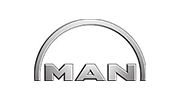One of the most common items of construction and demolition machinery has to be the standard 360-degree excavator. The versatility of this piece of equipment has made it an essential part of almost every building site you’ll come across. Unfortunately, most people believe that this invaluable machine has only a few limited uses, but when considering the different types and sizes of excavators available and the myriad of attachment options that can now be fitted, they are suitable for a far more comprehensive range of tasks.
What is a Standard Excavator
The standard excavator comprises a tracked undercarriage (running gear), with the operator’s cab and excavator’s engine mounted on a 360-degree rotating platform. The excavator’s arm consists of a boom, dipper (or stick) and an attachment such as an excavation bucket. Tracked excavators have a low ground pressure, increased traction and good stability which are well suited for uneven and/or soft ground conditions.
Long/High-reach excavators are a variation of a standard excavator that features an extended boom and dipper. These tracked excavators offer a much longer reach.
Wheeled excavators or rubber ducks are another variation of a standard excavator that runs on wheels instead of tracks. These excavators are best suited for hard terrains like tarmac or concrete. Wheeled excavators provide greater manoeuvrability and travel speed than tracked excavators.
Uses of a Standard Excavator
Here we will discuss the main uses of a standard excavator. Your first consideration should be to select the type and size of excavator that is best suited for the job by assessing the nature of the task and the site environment/conditions. The next consideration is to make sure you have the most suitable attachments for the work that are compatible with the size of excavator selected. Selecting the wrong type and size of attachment can result in inefficient and potentially unsafe working. Now, let us consider the various uses for a standard excavator.
Earthmoving and Drainage
Earthmoving is probably the most common use for an excavator. An important consideration in organising an efficient earthmoving operation is to select compatible site dumpers or dump trucks for your choice of excavator. Factors such as the speed of excavation, quantity and type of material, haul distance and site conditions all need to be taken into consideration. To find out more about the volume of materials an excavator can move, read our blog How Much Can an Excavator Move?
Drainage installation is another common use for an excavator. Here the excavator can undertake numerous tasks including trench excavation, installing ground support, assisting pipelaying and backfilling of the trench. The selection of the bucket width is important to be compatible with the pipe size and ground support being installed.
Watercourse dredging/desilting is one of the more unusual tasks for an excavator. For wider watercourses/rivers long reach excavators fitted with dredging buckets are an efficient way of desilting the channel.
Demolition
Excavators are very useful for the demolition process. The most common types of excavators used are long/high-reach. These excavators are designed to reach the upper levels of high-rise buildings/structures from ground level, and are purpose built with specialised tilting cabs, straight booms and camera systems for the high demands of the demolition process.
A wide selection of attachments are available including hydraulic breakers, shears, concrete munchers/pulverisers and various grabs to tackle the most demanding jobs and materials.
Material Handling
Excavators are very adaptable and efficient for material handling, whether this is for loading loose/palleted materials or lifting/distributing heavy objects. Once again, a wide selection of attachments such lifting points, pallet forks, various mechanical and hydraulic grabs are available to ensure the process is undertaken efficiently and more importantly safely.
Forestry and Landscaping
Excavators are just as useful in forestry and landscaping work. Excavators can be equipped with tree shears, grapple saws, log grabs, stump shears and grinders etc. These attachments, combined with the machine’s manouverability and hydraulic power, make the maintenance of woodlands an easy task to complete.
Associated with forestry is the preparation of the landscape when clearing or grading the ground for controlling water flow or preparing the ground for replanting. The use of attachments such as flails and munchers, stump grinders, rakes, tillers etc. make the excavator an invaluable piece of machinery.
Piling
A lesser known use for excavators are for smaller scale and difficult to access piling applications. Whether this is installing cofferdams or ground support systems the use of excavator mounted piling equipment for pile driving and extraction can provide a cost effective and versatile solution for the most awkward of installations.
Don’t Forget the Operator
When selecting plant and equipment, don’t overlook the operator. A qualified and experienced operator can utilise the machinery efficiently while maintaining and operating the equipment in the safest possible manner. A skilled operator can also be invaluable in advising on an efficient and safe working process.
AE Faulks Ltd provides leading plant hire in Nottinghamshire and plant hire in Leicestershire, offering a wide selection of modern self-drive and operated excavators with attachments, site dumpers and dumptrucks to match your construction plant hire requirements.



















